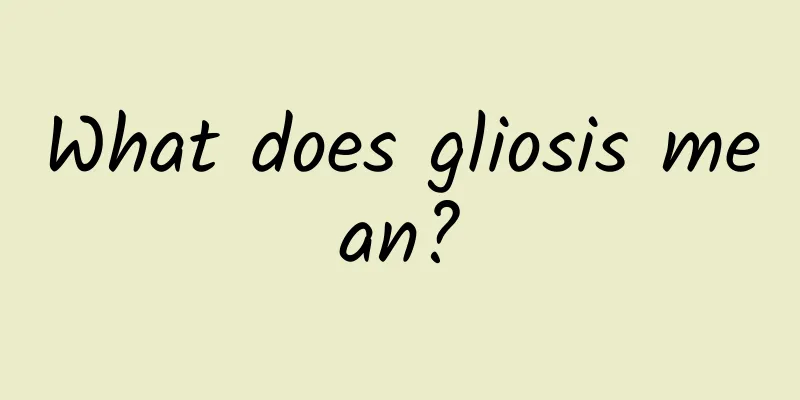What does gliosis mean?

| Many patients with central nervous system damage will hear doctors mention the term gliosis during diagnosis and treatment. What about gliosis? Glial cells are a type of star-shaped cells that are commonly secreted in the mammalian brain and have the function of separating and supporting cells. So what does the doctor mean by gliosis? What diseases may cause gliosis? What should we pay attention to if gliosis occurs? Gliosis is the massive proliferation of astrocytes in damaged areas of the central nervous system . Astrocytes are relatively large glial cells that have multiple functions and accumulate where neurons are damaged. Glial cell proliferation and neuronal loss in specific areas of the brain are often found in various neurodegenerative disorders, such as Korsakoff's syndrome, multiple sclerosis, and AIDS dementia complex. Astrocytes are the most widely distributed type of cells in the mammalian brain and are also the largest type of glial cells. The classic metal immersion technique (silver staining) shows that this type of glial cell is star-shaped, with many long and branched processes extending from the cell body, extending and filling between the cell body and processes of the nerve cells, playing a role in supporting and separating the nerve cells. The ends of cell processes often swell to form foot plates or end feet. Some foot plates are attached to the walls of adjacent capillaries, so these foot plates are also called vascular feet or perivascular feet. The foot plates close to the surface of the cerebrospinal cord are attached to the inner surface of the pia mater and connect to each other to form glia limitans. Neuron (neuron, neure), the basic structural and functional unit of the nervous system. The main parts include dendrites, cell body, axon and cell membrane. Dendrites are shaped like branches with many branches and have many branch-like processes, so they have the potential to receive input from many other cells. The cell body contains the nucleus, and most of the organelles that maintain cell life are also inside it. The axon is the output end of the cell, extending from the cell body and is generally very long. Many axons are wrapped in myelin, which serves to insulate them from the flow of information from other cells. There are many notches along the sheath wall, called Ranvier nodes. The axon ends at the synaptic terminal. |
<<: What to do if the episiotomy incision is broken
>>: Thyroid colloid nodules should be avoided
Recommend
It feels like a needle prick when I touch my fingertips
If the tip of your finger hurts when you touch it...
Can drinking too much alcohol cause chest congestion?
Drinking is a very common way of socializing nowa...
What to do if you get varicose veins after standing for a long time
There are many causes of varicose veins, among wh...
Baby's vomit is light red
When feeding your baby, no matter it is artificia...
Five liver function tests
When doing a physical examination, it must be don...
New efficacy of Longdan Xiegan Pills
Longdan Xiegan Pills are a kind of Chinese patent...
37.8 Can I take antipyretics?
Whether or not to take antipyretics when you have...
What should I do if I have severe morning sickness after more than one month of pregnancy?
Because every pregnant woman has a different phys...
Age at which hereditary hair loss begins
The main cause of hereditary hair loss is genetic...
Gout cold compress or hot compress? What is the best treatment?
Gout is a very common disease in our lives. Gener...
If you are embarrassed by smelly feet, an old Chinese doctor will give you 3 simple tips to get rid of foot odor!
The human feet are actually quite poetic, such as...
Treatment of viral encephalitis, medical and dietary treatments
Encephalitis is a disease that causes great harm ...
Can Polygonatum be used to make wine?
Polygonatum sibiricum is a relatively common Chin...
What is the normal age to stop menstruation?
Menstruation is a normal physiological reaction o...
I ate too much at night and felt stomach discomfort in the middle of the night
The stomach is one of the most important parts of...









